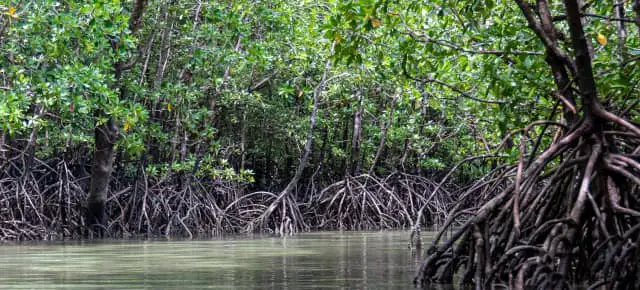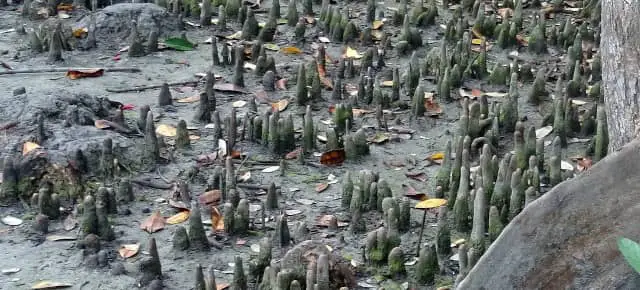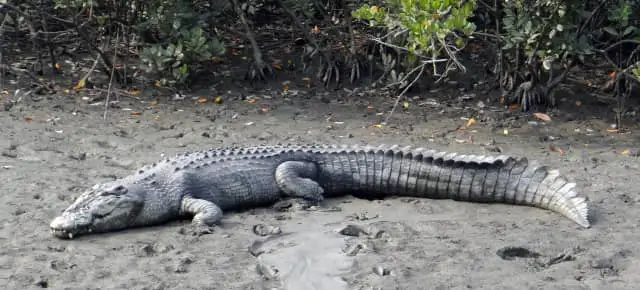
What mangrove benefits can people gain? This article describes the ecosystem services of mangroves that you can’t ignore. Read on to find out.
Many people in the coastal areas do not realize the importance of vegetation around them. Take, for example, the mangroves of the tropical areas. Mangroves are wonderful works of nature that provide ecological services vital to human survival.
Do you hear or remember what happened in Phuket, Thailand, way back in 2004? A tsunami caused an unimaginable disaster. Lots of properties and lives were lost in such a low probability but high-impact hazard of nature.
And did you know that partly the reason for lots of damages was attributed to lack of mangroves to weather the impacts of the surging waters? Had there been mangroves in front of the beaches, these would have blocked the incoming waters that can significantly reduce the tremendous power and force of the tsunami.
But this is just one of the benefits that mangroves provide.
What are Mangroves?
The mangroves are those trees commonly growing along the beaches in the tropical areas. These are of various kinds or species and range in sizes and features.
Common among those mangroves that grow near the beaches and are able to withstand high salt conditions are of the species Rhizophora. These mangroves have sturdy, branching stilt roots that can thrive even in muddy areas (Fig. 1).

Notable in areas grown with large, mature mangrove trees are their breathing roots or pneumatophores (Fig. 2). These are aerial roots that enable mangroves to breathe air in waterlogged habitat along the fringes of the coast.

5 Mangrove Benefits or Ecosystem Services of Mangroves
What are the benefits to be gained from mangroves? I enumerate six of the ecosystem services of mangroves in the following section.
1. Fuel Source
Source of cheap fuel. Mangroves serve a lot of purposes to man. In the past and even until this time, the rural folks make use of it in making charcoal. The product burns so well compared to other kinds of trees. This is a direct benefit that people can gain from these amazing trees.
But charcoal making by many rural folks ultimately contributed to the deforestation of the coastal zone. Although beneficial to humans, the practice has threatened the mangrove stands. Cutting those trees take years to replenish (see how a fisherman reforested a 20-hectare mangrove area).
2. Buffer Against Storms
The sturdy mangroves anchored into the muddy substrate in the coasts serve as a strong buffer against waves or strong storm surges. There are other indirect benefits that could be gained from mangroves.
Individual mangrove plants growing together serve as a natural barrier to surging waters or strong winds. This prevents any strong impact that may arise from the sea, such as tidal waves or tsunami.
3. Habitat of Various Kinds of Organisms That Serve as Food
Mangroves serve as habitat to various kinds of organisms. Thus, it is a rich source of food for humans.
Many marine organisms like crabs, shrimps, and small fishes find refuge among the roots of the mangroves, shells attach themselves on the stems or leaves, two-colored ants fold the leaves together to house their larvae, mangrove snakes occupy the thick foliage awaiting prey and even birds perch on twigs and branches on the canopy both at daytime and at night to roost. These organisms compose the unique food chain of the mangrove forest.
Crocodiles, apex predators that even prey on man, occasionally inhabit some mangrove lined rivers. They are virtually undetectable at daytime. At night, however, they are easily detected with the characteristic red reflection they bounce back when shone upon by a strong flashlight or portable search light (see how crocodilian populations are studied).

The presence of crocodiles means that the mangrove stand is still a viable ecosystem able to support a large diversity of animal life. Also, crocodiles enrich the ecosystem with its secretions.
A study in the Amazon showed that without the caimans (a relative of crocodiles), the existence of fish appears to be threatened. Fittkau (1970) hypothesized that caimans contributed a significant amount of nutrients that fertilize algae. Thus, with more algae available, more fish production occurred in the river lakes.
4. Aesthetic Value
Mangroves add beauty to the landscape. Anything green soothes the eye. Mangroves just do that as these plants add appeal to an otherwise boring coastal landscape without the greens and the intricate network of awesome stilt or buttress roots of large trees growing in isolated areas.
The many flowers and fruits of mangroves also appeal to the senses and elicit awe. At night, the firefly mangrove (Sonneratia spp.) flowers attract fireflies and adorn the trees with small “flying stars” that twinkle in the dark. It’s as if you’re in a magical land.
5. Carbon Sequestration
Plants need carbon dioxide to survive. As part of photosynthesis, carbon is removed from the atmosphere and fixed as plant biomass. Mangroves sequester carbon, thus help remove too much carbon dioxide from the atmosphere and help stabilize the atmospheric balance of gases or achieve a state of atmospheric equilibrium favorable to human life.
There are other things mangroves can do that can be beneficial to man. For this reason, it is just fitting and proper that we help conserve this important resource.
Conclusion
Mangroves serve at least five essential ecosystem services as enumerated in this article namely:
- fuel source,
- buffer against storms,
- source of food provided by organisms living there,
- possesses beauty or has aesthetic value, and
- carbon sequestration.
Recognizing the ecosystem services of mangroves, there is a need for us, humans, to find ways on how to sustainably use this important coastal resource wherever they exist.
Mangrove benefits are many, not only to the coastal villagers living near mangrove stands but also other people like tourists because of its value as a tourist destination as well as the world in general through the mangrove’s vital carbon sequestration function that helps prevent the accumulation of greenhouse gases.
Reference
Fittkau, E. J. (1970). Role of caimans in the nutrient regime of mouth-lakes of Amazon affluents (an hypothesis). Biotropica, 138-142.
©2023 February 6 Patrick A. Regoniel

